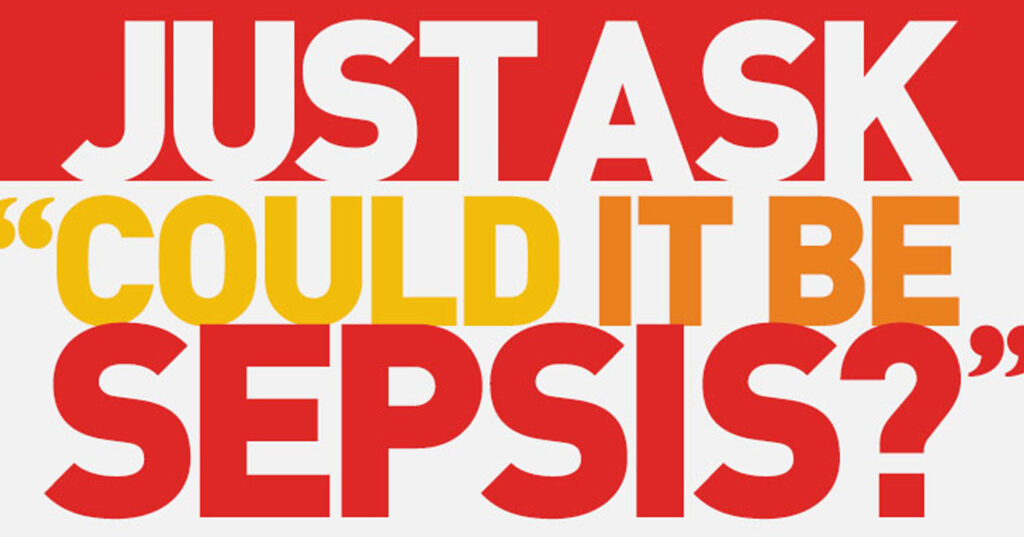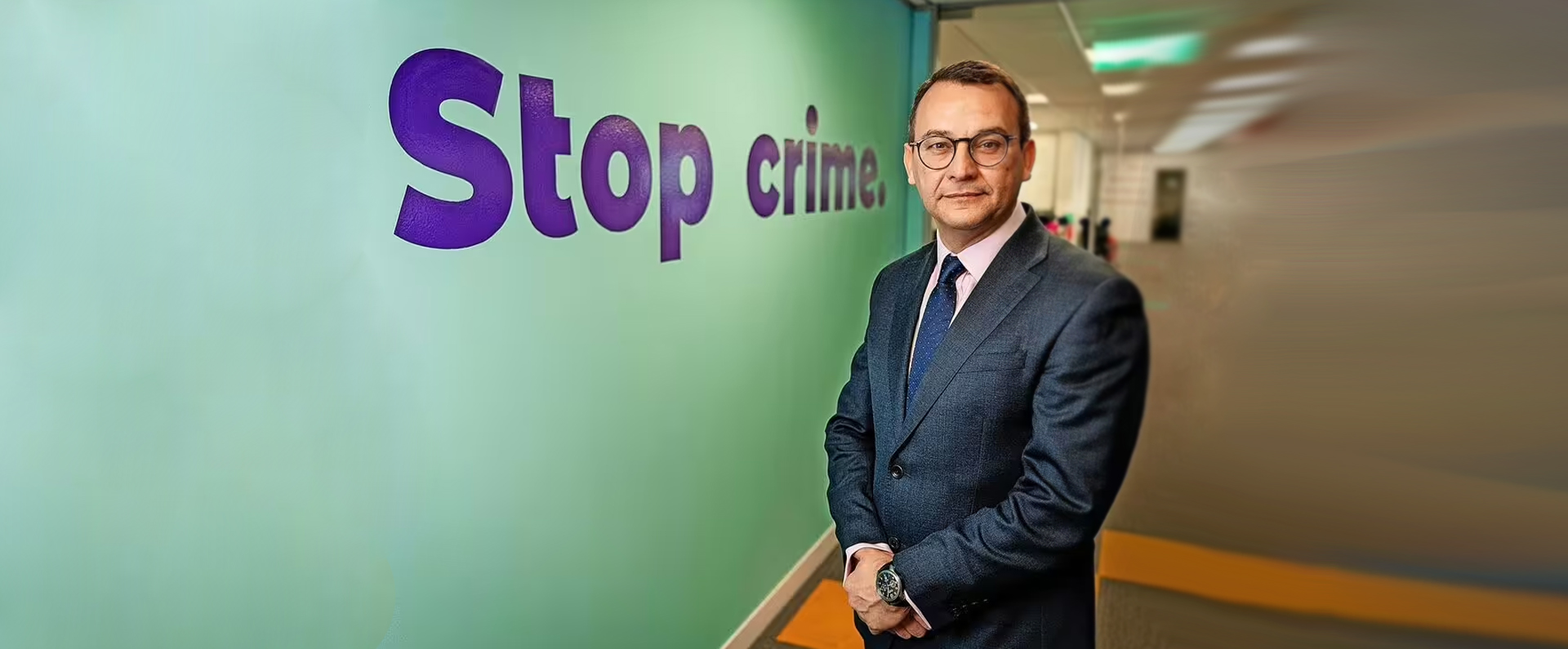
Speech made by Lord Ashcroft on 13 October 2016 at the Sepsis Unplugged Conference in Brighton.
Ladies and gentlemen, I can’t begin to tell you how delighted I am to be here. And when I say “here”, I don’t just mean at the Hilton Brighton Metropole. I mean “here” more generally, as in still “here” on Planet Earth.
For, just over a year ago, I fell victim to sepsis, the condition that I now know – but did not know then – that claims an estimated 44,000 lives in the UK every year.
I have been asked to share my experiences with you and I am going to do just that – to provide you with a detailed, if somewhat traumatic, account of a desperately unhappy episode that came so close to claiming my life.
I hope that by providing you – and a wider public – with an honest and frank account of what I went through, it will enable the message of just how dangerous sepsis is, to be spread far and wide. In short, by talking to you today, I hope it will save lives.
I will begin by winding the clock back to late September 2015 when I was leading a happy and fulfilled life as an international businessman, philanthropist, author and pollster. My co-authored biography of David Cameron – yes, that controversial one! – was about to be published and indeed it was only hours away from being serialised in a national newspaper.
I was in Gallipoli, Turkey: I have a passion for bravery, in general, and gallantry medals, in particular and I was visiting the sites of some of the great battles of the First World War, 100 years on. I was there in my capacity as a trustee of the Imperial War Museums: my trip was fascinating, life was good and already my thoughts had started to turn to my 70th birthday party in London early the next year.
However, on September 22 – the final night of my three-day visit to Gallipoli – I started to feel decidedly unwell. In fact, I vomited uncontrollably for the best part of an hour. A local doctor prescribed some pills in an attempt to settle my stomach but, unsurprisingly perhaps, did not make a successful diagnosis.
The next morning I still felt the worse for wear but I put it down to food poisoning and was confident it would soon pass. So I decided to press ahead with my planned schedule and I flew to the Turks and Caicos Islands in the Caribbean for a business meeting.
On the flight over to the Turks and Caicos and on arrival in the Caribbean, I still felt ill but I soldiered on because I didn’t think it was particularly serious. Fortunately, however, I did ask a local doctor to see me who felt I should go for a proper check-up.
And it was at a small private clinic on Providenciales, in the Turks & Caicos Islands, that I had the blood tests that revealed sepsis, signalled also by a sudden and dramatic drop in my blood pressure to 60/40.
Although I didn’t realise it, my condition was deteriorating sharply. The doctors told me I was in septic shock, but I still didn’t understand the implications: that some of my vital organs were starting to close down. So I was still blissfully unaware of the seriousness of my condition.
The next thing I knew I was being mede-vaced to the Cleveland Clinic in Ohio, America, the number 2 ranked hospital in the USA of which I happen to be a Trustee. Frankly, I thought this was a bit of over-reaction and, even at this point, I didn’t feel any real sense of alarm – more a feeling of frustration that my schedule was being disrupted.
In fact, I was able to walk off the plane into an ambulance. I thought that, perhaps, I’d be in hospital for a couple of days and then on my way again. It was only when they put me in a bed and I counted eight doctors standing around me that I started to think it must be quite serious especially as I had 5 cannulas inserted, 2 in each arm and 1 in the neck.
As a businessman, I have often been in a room with eight lawyers, but never eight doctors. I was thinking to myself: “I’d actually prefer eight lawyers right now!”
Soon I was put into intensive care. By now it was touch and go whether I lived or died: not only was my blood pressure dangerously low but my liver and kidneys were perilously close to shutting down.
For a few days, I was completely out of it. I have no recollection at all of certain periods of time, but I know that I was pretty incoherent. I was attached to all these machines and had an oxygen mask over my mouth.
In fact, my arms were tied down to the sides of the bed because I was, apparently, trying to rip off the mask, although I can not remember doing this.
The first thing I was aware of was when hospital staff were trying to get hold of my family for permission to put me on a kidney dialysis machine.
They did not have to do this in the end, but I knew my kidneys were dangerously close to failing, and at that stage, I started to become alarmed. In my moments of consciousness, I started to think I was nearing the end.
On my second or third day in intensive care, I thought it was the end. In my few moments of consciousness, my brain was in turmoil. I was re-visiting events in my life, and I thought: “If this is my time, so be it.”
I didn’t want to die, obviously, but I thought: “If I have to go, I’ve had a good innings.” I was even, with a hint of vanity, drafting in my head how my obituary might read.
However, I was mainly thinking how terrible it would be to die without sorting things out, without tying up loose ends and saying the things that I wanted to say. This really started to worry me.
I had very little pain, but my heart rate was erratic — it is one of the symptoms of sepsis. At times, too, I was shivering uncontrollably. At one point, the panic button was pressed and I was rushed to theatre: they thought I might be having a heart attack.
In the event, I did not suffer a heart attack, but my overall condition remained precarious. There were times when I was “out of it” and other times when I was quite lucid.
My mind was racing. I was worried that I would not have a chance to say goodbye to my family. Then I thought: “Would it be better just to go? Nicer perhaps just to send messages?”
By the third or fourth day I got my PA to come to my bedside with a notepad. I wanted to tie everything up, commit to paper all the promises I’d made verbally.
Three years ago, as part of my commitment to philanthropy, I had signed something called The Giving Pledge – a firm agreement to give at least half of my wealth to charitable causes either during my lifetime, or after my death.
However, it preyed on my mind that some of the details of my undertakings had not been formalised. I had promised to make donations to certain charities and I wanted them to be honoured. I wanted everything to be written down.
There were personal messages, too, to family and friends. I dictated notes to my family and told them I loved them. Immediately, after I had done all that I felt better — calmer and at peace and frankly ready to go.
I requested that my three grown-up children and grandchildren should be kept away. They were extremely worried about me and they wanted to be with me, but I knew it would be better with just the professionals around me.
I also knew that if I saw their emotion and concern I would start getting upset that they were upset. So instead, I sent them messages: heartfelt personal notes because I knew by this time that I might die. Some people who know me undoubtedly regard me as a tough, no-nonsense businessman who does not show his true feelings easily. But, trust me, I was very honest with my emotions during this difficult time, as I am now, delivering this speech.
During my 19 days in intensive care, I had some stressful moments. I suffered internal bleeding and a lesion on an artery in my stomach had to be sealed.
My body was bloated by fluid retention and my hair started to fall out. I would find clumps of hair on my pillow. I lost weight — eventually about 30lbs — because I could only eat small amounts of liquidised food.
Two things I was able to digest were diet Jell-O and Popsicles – sugar-free ice lollies. It’s not a diet I’d recommend to anyone for the long term!
After about a week, doctors were able to reassure me that I was off the danger list but I was still seriously ill. Despite being incredibly keen on current affairs, I did not watch television or read a newspaper for 14 days. During that time, I did not make or receive a phone call either. I was not in a fit state to start making decisions and my family and closest aides protected me from one of the great bains of my life – endless emails.
I am a private person and, as such, for several days only a small handful of people knew about my illness. However, I eventually had to come clean about it publicly because I was unable to attend my own book launch, in London, of Call Me Dave: The unauthorised biography of David Cameron.
The event went ahead without me and it was only then that I, somewhat reluctantly and through a hastily-drafted speech read out in my absence, revealed the extent of my life-or-death fight against sepsis.
My journey back to good health has, in fact, been a long and tortuous one. I was “discharged” from intensive care after almost three weeks, but I still remained in hospital.
For a long time, I was terribly weak – my muscles so wasted – that, painstakingly, I had to learn to walk again. I had a Zimmer frame and on my second day out of bed I was taking a few, tentative steps. As I got stronger, I progressed to walking further and further.
For five months, however, I remained convalescing in the sunshine of Florida and the Caribbean. During this period, there were some major setbacks that resulted in me being re-admitted 3 times to hospital: for blood clots on my lungs, gall stones and even the removal of my gall bladder. None of these may have been a direct result of my sepsis but – whatever the cause – I remained a long way from being in top form.
However, there is nothing like a good deadline to act as an incentive to get better. Finally, I returned to England in March of this year, just in time to celebrate my 70th birthday at a party for family, friends and close associates in central London. This was my first event for 5 months.
Today, given all that I have been through over the past 13 months, I am remarkably well. Of the 30 lbs that I lost, I have only put half of it back on: I feel better for carrying less weight and I do make a conscious effort to stay in reasonably good shape: I walk a lot and always try to keep up my 10,000 steps – about five miles – a day. If I enter a building and it has less than five floors, I walk up.
For a time, I tried to slow down a bit – moving from the “fast lane” to the “middle lane” and resigning from a few posts. However, the “middle lane”, let alone the “slow lane”, has never really suited me. Today I am back playing energetic and active roles in the areas that are my passions.
The last 13 months have been among the most difficult of my life but – make no mistake – I am fully aware that I am one of the lucky ones.
Every time I read a story about how sepsis has taken another life, I feel distraught. For example, I was horrified to read earlier this month how Lucinda Smith, 43, a solicitor and a mother from Billericay, Essex, had died from sepsis as a result simply of scratching the back of her hand while gardening.
When children are involved, the stories can be even more heart-breaking. For example, how can anyone not have been deeply moved by the tragic death of William Mead, from Cornwall, to sepsis just 17 days after his first birthday? Even worse, William’s death in December 2014 was avoidable in that his condition was not diagnosed in time because of a series of medical blunders. Since then, of course, his mother Melissa has campaigned so courageously to try to prevent a similar tragedy.
As Melissa, now an Ambassador for the UK Sepsis Trust, put it so poignantly: “Following William’s untimely death it has been my passion to make sure that another family do not have to suffer the pain that we endure, so I’m proud to be part of a team that allows me to empower others to be aware and confident about what sepsis is.”
I, like many of you here, have viewed the video that Melissa posted in memory of her young son. For me, the most striking line comes after she reveals that she found William dead in his cot, having earlier been suffering from a chest infection and pneumonia. Melissa wrote: “The first time I saw the word sepsis was on William’s death certificate.” Perhaps that is why sepsis is so often known as the “silent killer”.
I am standing before you all today – with so many sepsis experts present – feeling both slightly embarrassed and humbled.
With the wonderful benefit of hindsight, I could and should have done things differently in September last year: at the time, although I had heard of sepsis, I did not know enough about either its symptoms or just how serious the condition is.
I realise now, of course, I should have been better informed about sepsis and its symptoms in the first place. When I fell ill, I should have headed for a proper check-up in Turkey rather than board a flight to the Caribbean. So my message to you today is: “Do as I say, not as I did. Please learn from my failings and shortcomings.”
However, more by luck than judgement, I made it – by the skin of my teeth – and I have lived to fight another day. I am, of course, hugely grateful to the doctors at that small clinic on the Turks and Caicos Islands – they diagnosed sepsis before it was too late and, in doing so, they undoubtedly saved my life. I must say a big thank, too, to the medical teams who cared for me so well during my illness and during my rehabilitation.
As I journeyed along the road to recovery, I started reading more and more about sepsis: its symptoms, its various causes, the incredible death toll that it claims.
I know now, for example, that sepsis claims more lives in the UK than bowel, breast and prostate cancer combined. I know that, worldwide, sepsis claims a life every 3.5 seconds.
I know now, too, that there are some 150,000 cases of sepsis every year in the UK and, as stated earlier, 44,000 of these result in deaths.
I know now, as well, that one in three Britons has never heard of sepsis. And of those who have heard of it, one in four does not believe it is a medical emergency.
I know now, additionally, that as a diabetic, I am more susceptible to sepsis that the typical man, or woman, on the street.
The more I read about the condition, the more I wanted, in some way, to become involved in a campaign to raise awareness of the dangers of sepsis and how, if caught early enough, and treated swiftly with antibiotics and fluids, people can and do survive sepsis.
It was fortuitous, therefore, that earlier this year, the UK Sepsis Trust got it touch with me and, to cut a long story short, that is why I am here with you today.
I am full of admiration for all the work that the UK Sepsis Trust has done in the past four years, since it was founded by Dr Ron Daniels, a consultant rightly regarded as one of the world’s greatest authorities on the condition. The charity’s aim is a simple one: to save some 14,000 lives a year.
The UK Sepsis trust is just what it says on the “tin”: a grassroots charity passionate about mending sepsis. Those of us who are determined to do all we can to highlight the dangers of sepsis have already won over some powerful and influential allies.
Encouraged by both the UK Sepsis Trust and Melissa Mead, the Health Secretary, Jeremy Hunt, agreed to lead an awareness campaign about sepsis that was announced on World Sepsis Day last month.
Additionally, the National Institute for Health and Care Excellence has updated its guidelines so that sepsis is treated by doctors and nurses as an emergency on the same level as heart attacks.
The Daily Mail newspaper has also undertaken a campaign highlighting how so many lives are lost needlessly every year to sepsis and how we can all look out for the tell-tell signs of the condition.
Today’s Sepsis Unplugged conference, too, represents a major step forward in terms of trying to change the way that the NHS deals with sepsis and how we can create increased awareness of the condition, as well as giving greater support to sepsis sufferers.
There are many other groups and individuals – including those here today and tomorrow at this two-day conference – who are equally committed to “the cause”.
In short, progress is being made but there is a great deal more work to be done and together we can achieve great things.
Let me repeat: I am one of the lucky ones – one of those fortunate enough to have had sepsis and survived. As such, I will always do all I can in the future to support a noble cause that can and will save many lives. Thank you very much.
Published in the Daily Mail on 14 October 2016



